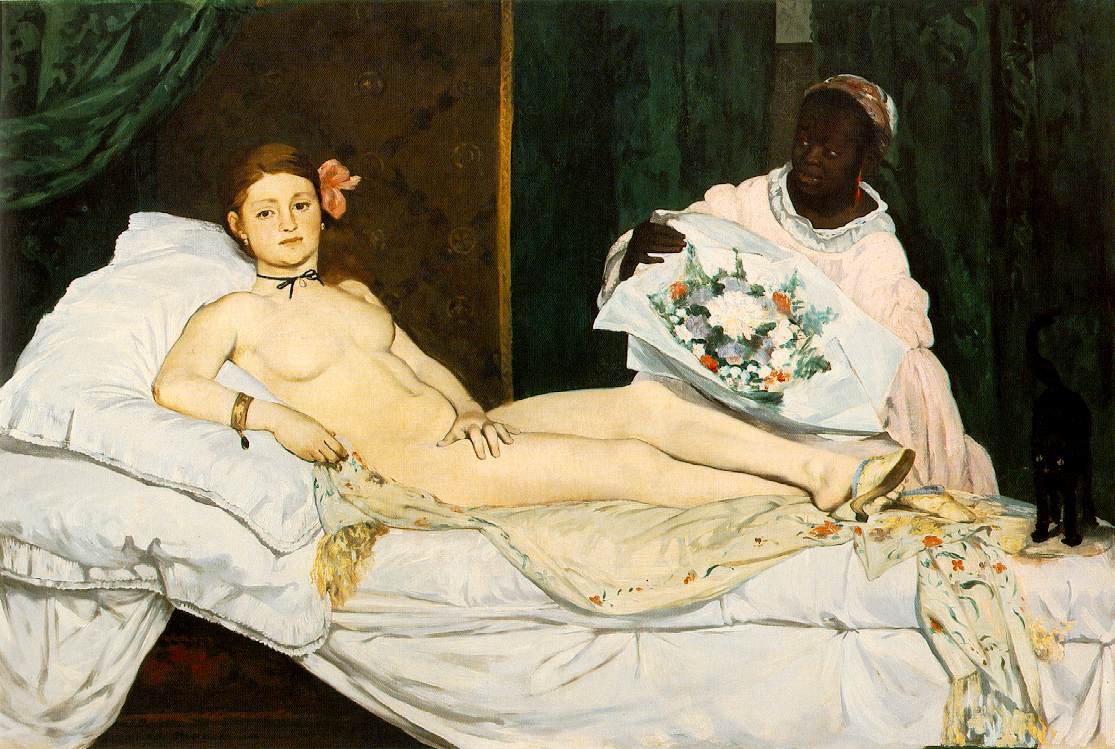Manet learned to paint in
the Louvre by studying old masters. He was particularly impressed by Velázquez,
contrasting his vivid brushwork with the "stews and gravies" of academic style.
Manet began to develop a freer manner, creating form not through a gradual
blending of tones but with discrete areas of color side by side. He drew on
the old masters for structure, often incorporating their motifs but giving
them a modern cast Several artists had begun to challenge the stale conventions
of the Academy when Manet's Olympia (now at the Musée d'Orsay, Paris) was
accepted for the Salon in 1865. Never had a work caused such scandal. Critics
advised pregnant women to avoid the picture, and it was rehung to thwart vandals.
Viewers were not used to the painting's flat space and shallow volumes. To
many, Manet's "color patches" appeared unfinished. Even more shocking was
the frank honesty of his courtesan: it was her boldness, not her nudity, that
offended. Her languid pose copied a Titian Venus, but Manet did not cloak
her with mythology. She is not a remote goddess but emphatically in the present,
easily recognized among the demimonde of prostitutes and dancehalls. In Olympia's
steady gaze there is no apology for sensuality and, for uncomfortable viewers,
no escaping her "reality." Manet's succès de scandale made him a leader of
the avant-garde. In the evenings at the Café Guerbois, near his studio, he
was joined by writers and artists, including Monet, Bazille, and others who
would go on to organize the first impressionist exhibition. Manet's embrace
of what the poet Charles Baudelaire termed the "heroism of modern life" and
his bold manner with paint inspired the future impressionists, though Manet
never exhibited with them.

